AP Biology, Unit 2: Organelles
1/58
There's no tags or description
Looks like no tags are added yet.
Name | Mastery | Learn | Test | Matching | Spaced |
|---|
No study sessions yet.
59 Terms
Organelles
Specialized structures inside of a living cell
Prokaryotic cells
Bacterial cells
Unicellular
Do not have a nucleus/organelles are NOT membrane bound
Eukaryotic cells
Animals, plants, fungi, most algae
Multicellular
Contain a nucleus/membrane-bound organelles
Nucleus
Found in only Eukaryotic cells
Protected by a nucleus envelope/double membrane structure, bilayer of lipids, proteins
Protects DNA/chromosomes and nucleolus
Produces and assembles ribosomes
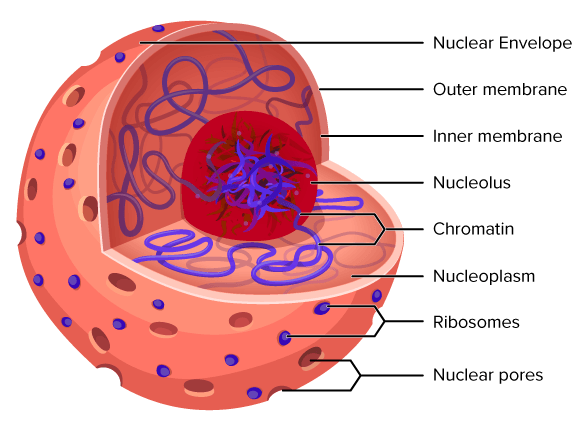
Ribosomes
Found in all cells (Eukaryotic + Prokaryotic)
Creates the proteins found in all cells
“Free” ribosomes - synthesize proteins in the cytoplasm; “Membrae-bound” ribosomes - found in the ER, synthesizes proteins inserted into the membrane
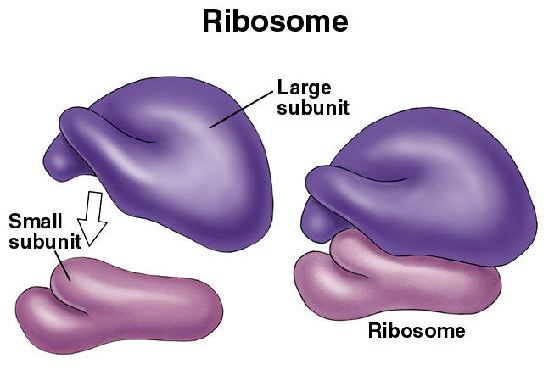
Rough ER
“ER”: Endoplasmic Reticulum
Makes proteins, transports proteins to the Golgi apparatus
Flattened sacs covered in ribosomes
Eukaryotic cells
Production/folding/quality/protein dispatch
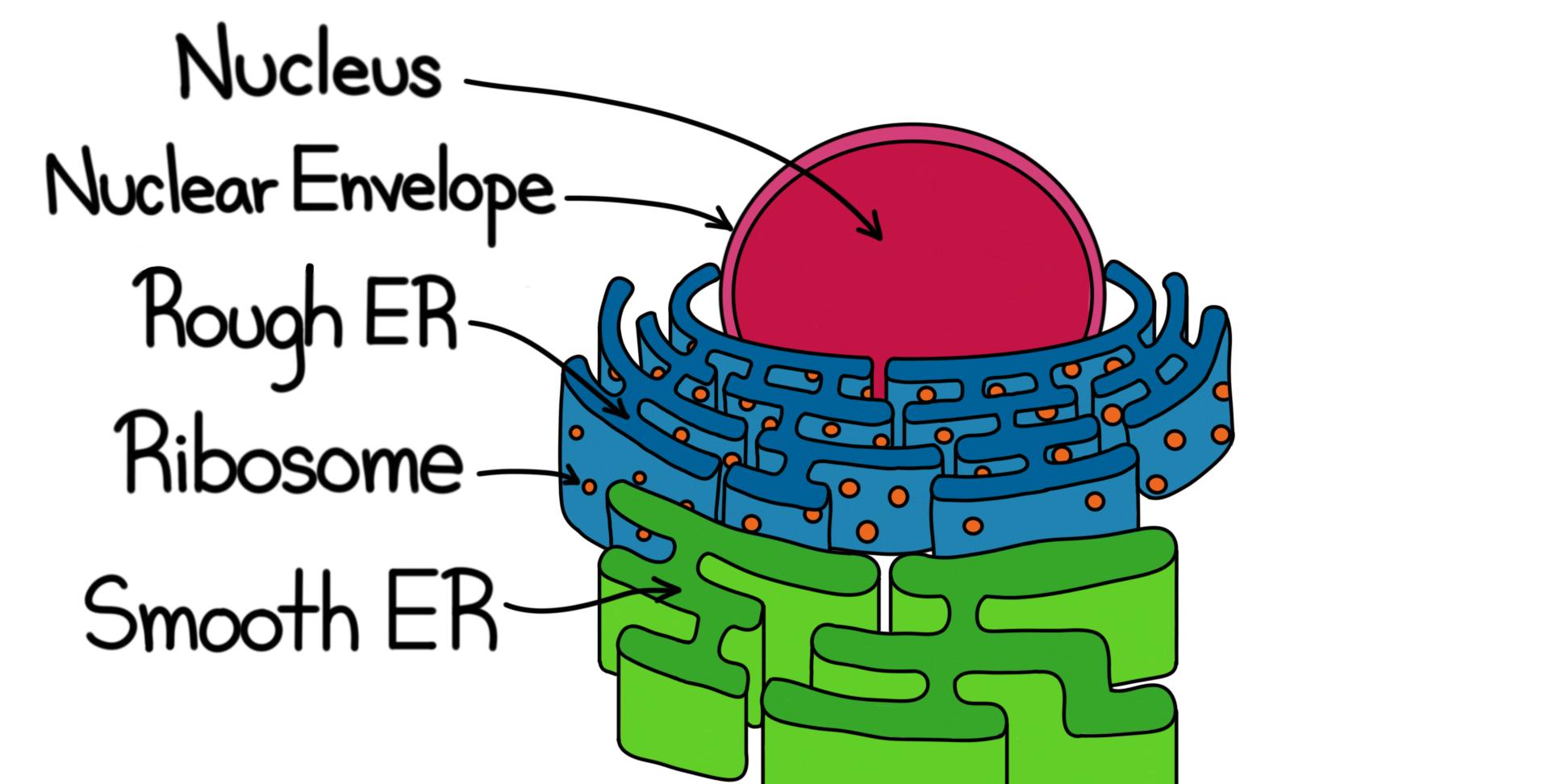
Smooth ER
Eukaryotic cells
Lacks ribosomes on its surface
Lipid and protein synthesis, stores calcium, materials received by the Golgi body
Network of membranes, interconnected tubes, flattened sacs
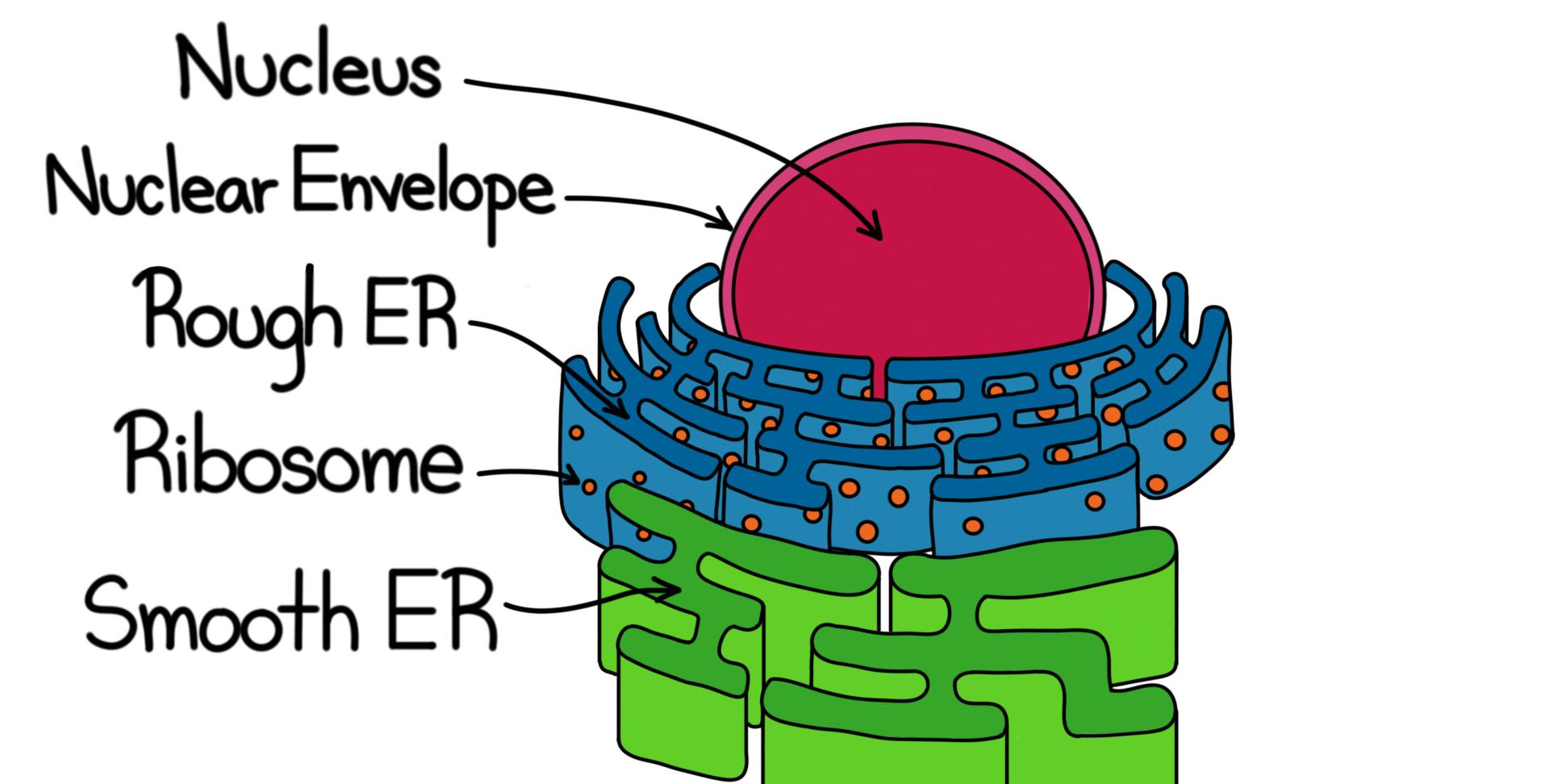
Golgi Body
Eukaryotic cells
Folded membrane sacs
“Packaging center” of the cell - receives proteins from the ER and modifies, sorts, and ships them across the cell
Makes lysosomes, maintains carbs to function
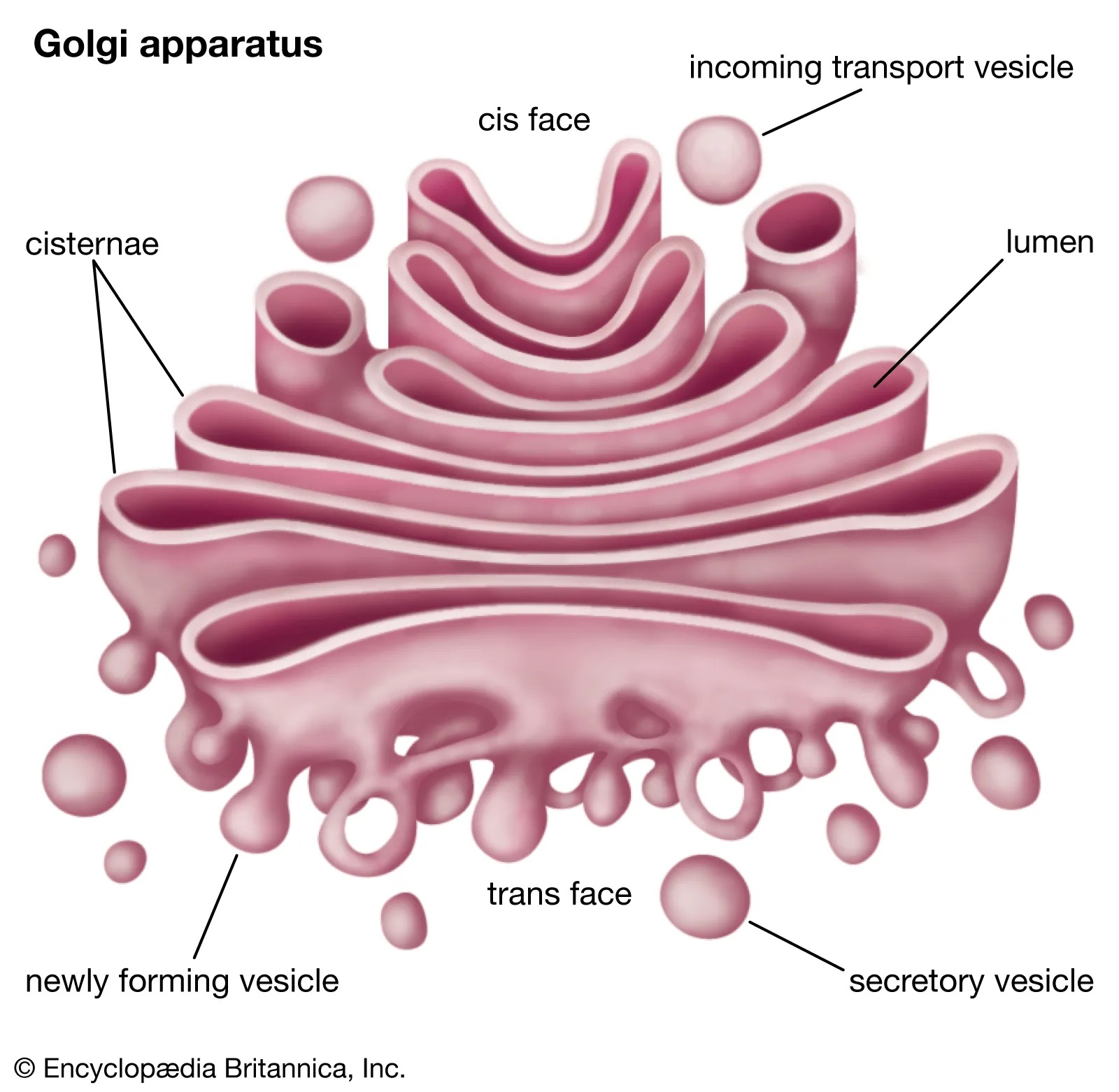
Mitochondria
“Powerhouse of the cell”
Eukaryotic
2 membranes, inside and out phospholipid bilayer
Cellular respiration - generates energy needed for the cell to function in the form of ATP
Folds and changes shape
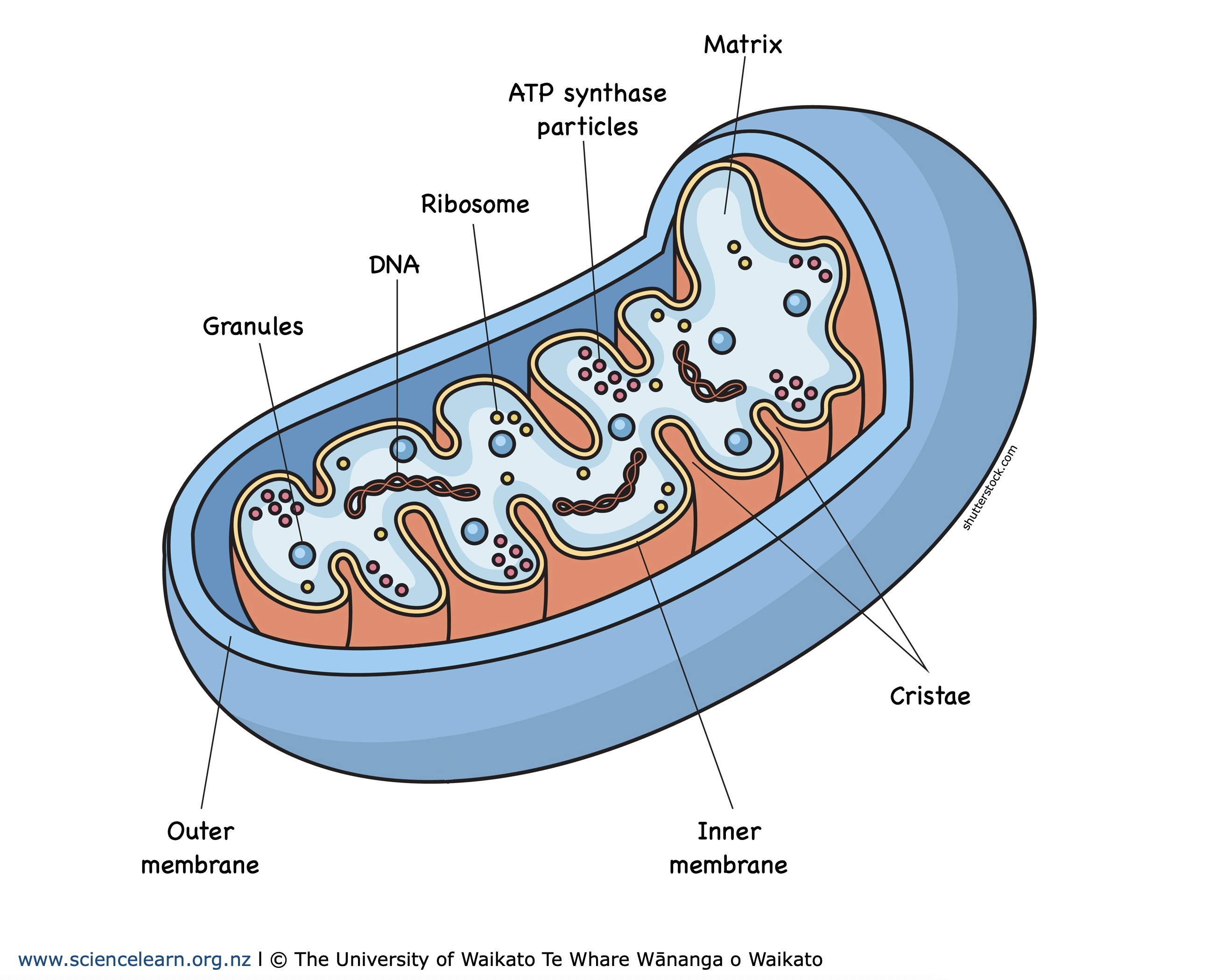
Lysosomes
Eukaryotic cells (not found in plants)
Digests and breaks down macromolecules - digestive enzymes
Made in the Smooth ER
Membrane lipid layer
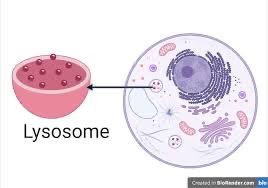
Vacuole
Found in both cell types but Eukaryotic function differs
Large central vacuole (small in animals, larger in plants)
Pumps out excess water, pigments
Stores water, nutrients, ions, minerals, waste products
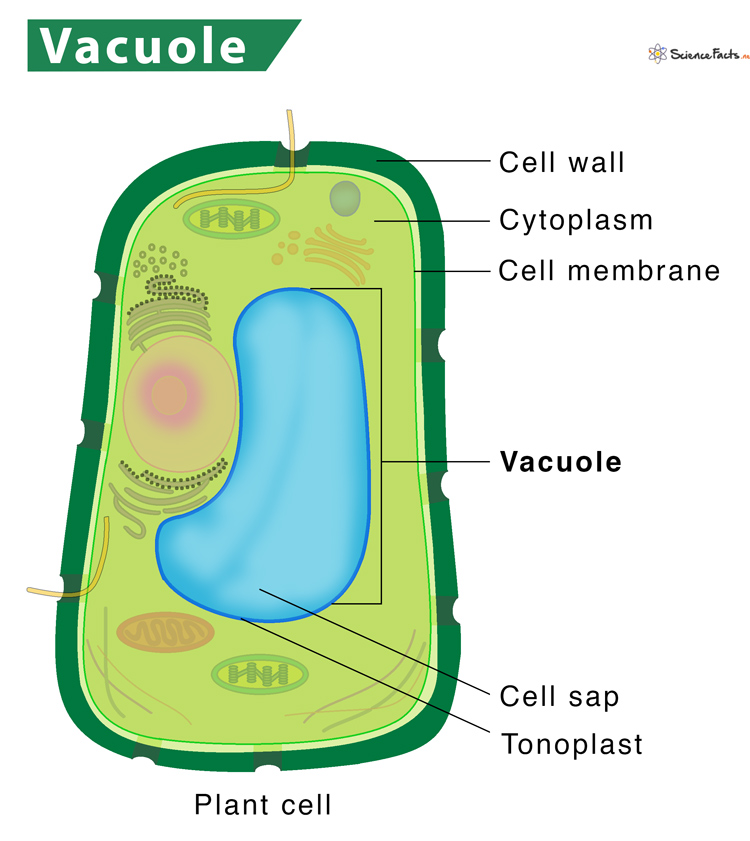
Chloroplasts
Eukaryotic cells
Converts sunlight energy to chemical energy stored in sugar molecules
2 membranes - thylakoids interconnected sacs
Division of membranes creates 3 “compartments”: thylakoids, stroma, inter-membrane
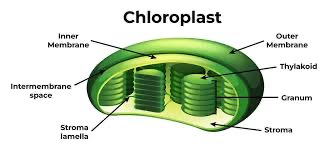
Cytoplasm
Gelatinous liquid inside of a cell; contains water, salts, molecules
Surface area
The total area of the outside of an object
Volume
How much space a object takes up
Surface Area and Volume in Cells
Cells need to stay small in order to move resources/waste products in and out more efficiently
Larger SA:V ratio, happier, smaller cell
SA:V ratio
As an object grows larger, its amount of surface area relative to its volume decreases, decreasing the SA:V ratio
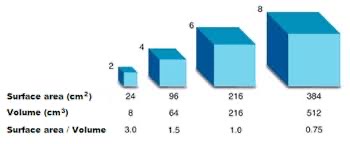
Maximizing Surface Area in Cells
villi/microvilli
Membrane folding
Hairs/projections
Phospholipid bilayer
Primally nonpolar because of hydrophobic lipids
Semi-permeable - some molecules can pass though, others need the help of a protein
What substances can/cannot pass through the phospholipid bilayer?
Ex.
Ethanol (small, nonpolar) - YES
Chlorine ions (charged) - NO
Amino acids (large, nonpolar) - NO
Glucose (large, polar) - NO
*NO = need a channel protein to pass through
Most gasses can pass through; larger molecules cannot
Necessary Characteristics to Permeate the Cell Membrane
Criteria #1: small size (larger molecule cannot pass through)
Criteria #2: nonpolar (polar molecules can pass through but will use protein if able; charged molecules cannot and a protein is necessary)
Channel Proteins
Control movement of substances across cell membranes
Hydrophilic core
Used by larger/charged molecules to pass through
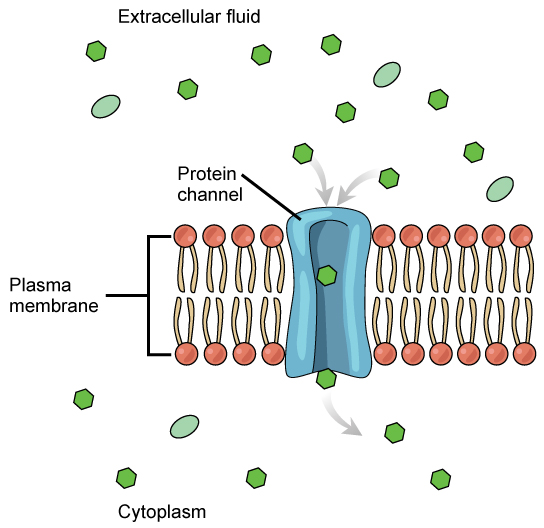
Aquaporins
Water (small, polar) mostly uses aquaporins - specialized channel proteins
Water CAN pass through the membrane in small amounts
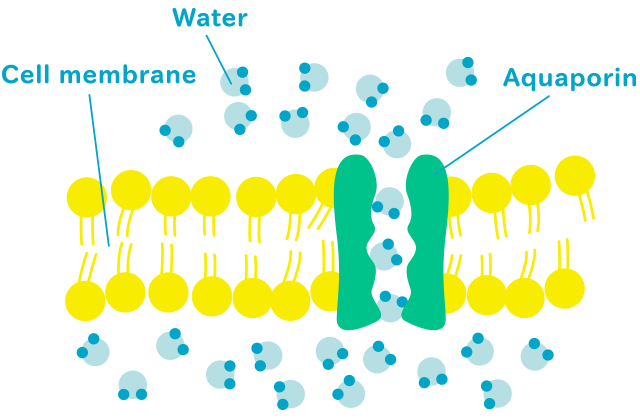
Phospholipid Bilayer of the Cell Membrane
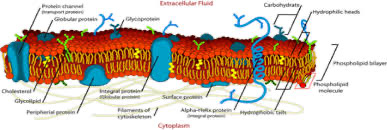
Cholesterol in the Phospholipid Bilayer
Regulates membrane fluidity
Stabilizes cell membrane
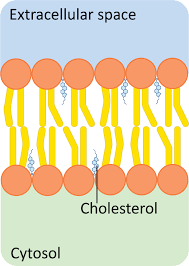
Glycoproteins in the Phospholipid Bilayer
ID tags/cell recognition
Cell signaling
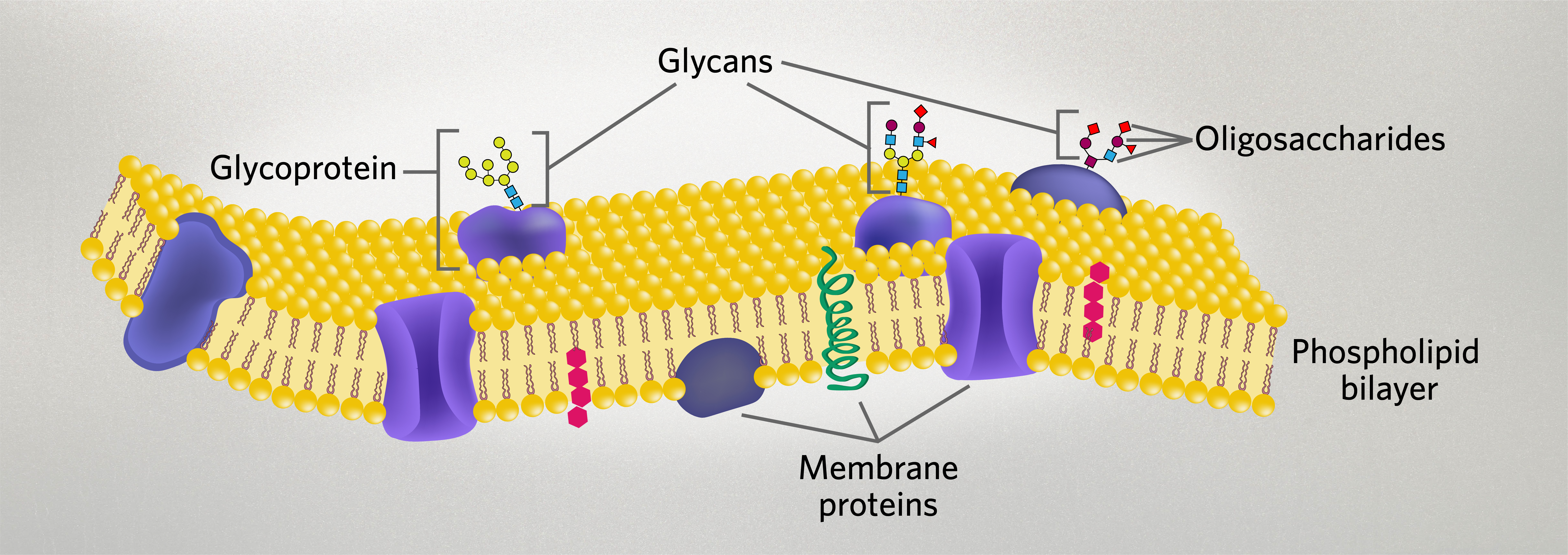
Peripheral proteins in the Phospholipid Bilayer
Enzymes
Structural support
Cell shape, cell messaging
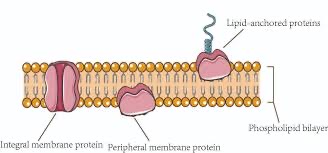
Glycolipids in the Phospholipid Bilayer
Cell recognition, signaling
Stability
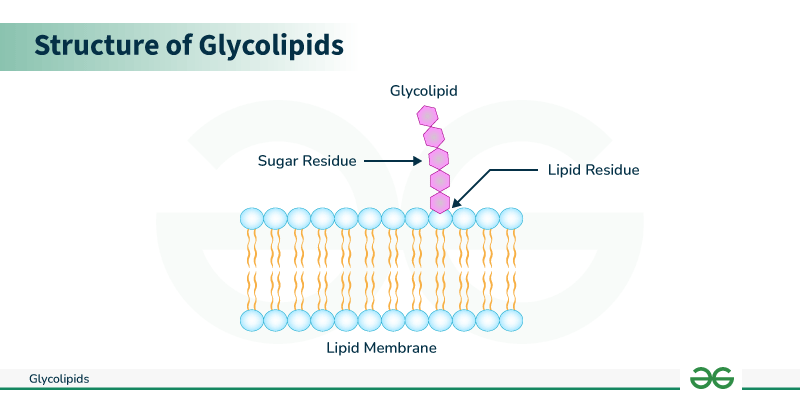
Diffusion
Movement of molecules across the semi-permeable membrane
H → L
Without energy
Increased temperatures excite molecules, causing quicker diffusion
Why do cells needs transport?
Cell membrane maintains homeostasis by regulating what materials can enter and exit the cell
Without this monitoring ability, cells would not be able to maintain internal conditions like water balance, nutrient levels, waste removal, etc
Concentration gradient
Molecules are always in motion
Where there is a difference in concentration (amount of molecules clustered/concentrated in one area), there is a concentration gradient
Molecules move from areas of H to L concentration until dynamic equilibrium is reached
Dynamic Equilibrium
Molecules are “balanced”, evenly spread out
Molecules are still moving, but there is no net change in concentration
Simple Diffusion
Movement of small, nonpolar molecules directly across the phospholipid bilayer
H → L
Requires no energy
Larger the concentration gradient, the more diffusion occurs
Passive Transport
No energy - movement relies on the natural direction of molecules
H → L concentration
Simple diffusion
Osmosis (diff. of water)
Facilitated diffusion (uses some kind of transport protein)
Osmosis
Diffusion of WATER across the semi-permeable membrane
Low solute concentration (High concentration of water) to High solute concentration (Low concentration of water)
Water always moves towards the higher concentration of solute - concentration of said solute dictates the movement of water (hypotonic, isotonic, hypertonic)
Does not require energy
Hypotonic
Water moves INTO the cell
More water outside of the cell, more solute inside the cell
Animal cells - cell swells
Plants cells - turgid (normal)
Isotonic
Water moves IN and OUT of the cell equally
Animal cells: no net change (normal)
Plant cells: flaccid
Hypertonic
Water moves OUT of the cell
More water inside, more solute outside
Animal cells: shrinks
Plant cells: plasmolyze
Osmoregulation
Water moves from low solute concentration (low osmolarity) to high solute concentration (high osmolarity)
Cells monitor the movement of water to maintain a stable balance and to prevent the loss/gain of dangerous amounts
Membrane Potential
Ions change the electrical balance between the inside and outside of the cell when they pass through protein channels
Difference in charge is called membrane potential
Facilitated Diffusion
Movement of large/polar substances across the cell membrane from H → L concentration
Utilizes transport proteins, but does NOT require energy
Channel proteins - hydrophilic tunnels, typically used by charged/polar molecules like ions
Carrier proteins - change their shape (conformational change), used by large molecules like sugars and amino acids
Aquaporins - specialized channels that transport water
Active Transport
Materials needs to be transported in and out of the cell membrane against their concentration gradient, from L → H concentration
This movement requires cellular energy in the form of ATP
Carried out by carrier proteins in the cell membrane that use energy to change shape and move substances across the membrane
Active Transport vs. Facilitated Diffusion
Active Transport requires ENERGY. Facilitated Diffusion uses PROTEINS.
Ion Movement
Cells maintain specific ion gradients across their membranes in order to carry out process like electron sing along
These gradients are maintained by ion pumps: membrane proteins that use ATP to move charged particles
Sodium-Potassium Pump
Uses 1 ATP molecule for every transport cycle
Moves 3 Na+ ions out of the cell (sodium)
Moves 2 K+ ions into the cell (potassium)
Creates a charged imbalance (more positive outside, more negative inside) and maintains membrane potential (imp. for nerve/muscle function)
Bulk Transport (Active)
movement of large molecules (ex. proteins, polysaccharides) or large groups of molecules in and out of the cell
Requires energy
Involves processes like vesicle formation and membrane fusion
Can move molecules against their concentration gradient, but does not have to
Endocytosis
Cell takes materials INTO the cell
folds plasma membrane inward to form a vesicle
Engulfs particles too large to pass through membrane proteins
3 types: phagocytosis, pinocytosis, and receptor-mediated endocytosis
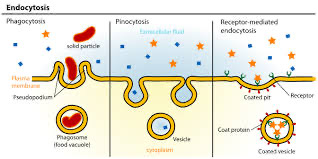
Phagocytosis
“cell eating” - moves outwards to engulf material
Cell engulfs large solids to bring the material into the cell (form of ENDOcytosis)
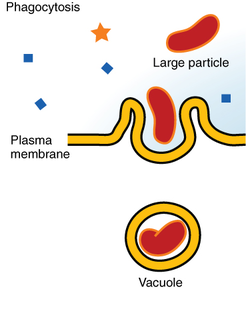
Vesicle
A small sac formed by a membrane and filled with liquid.
Vesicles inside cells move substances into or out of the cell.
Pinocytosis
“cell drinking” - membrane pinches inward
Cell takes in smaller extracellular fluid and solutes into the cell (form of ENDOcytosis)
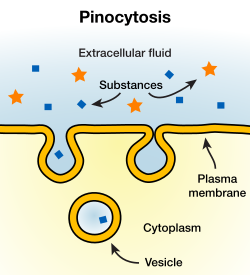
Receptor-Mediated Endocytosis
Receptors on the cell surface bind certain molecules, triggering vesicle formation and subsequent intake of specific molecules
Exocytosis
large molecules/large groups of molecules move from inside to OUTSIDE the cell
Vesicles move to and fuse with the membrane and ejects material into extracellular environment
Cell Compartmentalization
A large amount of organelles benefits Eukaryotes because…
Prevents interferences of different reactions (digestion vs. synthesis)
Maintains optimal conditions (Lysosomes and pH)
Increases surface area → allows for more reactions (Ex. Internal membranes of mitochondria/chloroplasts) increase SA and efficiency)
Allows for direct movement of materials through cell (Ex. Proteins send to the Golgi body)
Organelles: Eukaryotes vs. Prokaryotes
Eukaryotic cells have membrane-bound organelles
allows for “micro-environments” inside of the cell (ex. Lysosomes are acidic, but the whole cell is not acidic)
Complex internal organization, efficient processes
Prokaryotic cells lack internal compartments and organelles, therefore not as efficient
Endosymbiotic Theory
IDEA: How did organelles develop?
specialized organelles were one free-living prokaryotes that were engulfed by a larger cell
this theory only applies to mitochondria and chloroplasts, which have unique features that support the Endosymbiotic theory
Unique Features: Supports:
Double membranes → engulfing event
Possesses circular DNA → prokaryotic origin
Bacterial ribosomes → prokaryotic translation machinery
Divide via binary fission (asexual reproduction) → Independent reproduction
Cell Wall
Found in plants, fungi, many bacteria
Structure is primarily carbs (cellulose, chitin, peptoglycan)
Supports and protects the cell, maintains shape
Porous (not selective)
Outside of the cell membrane (most outer later of the cell)